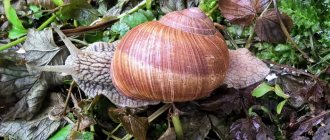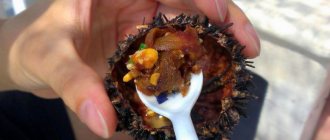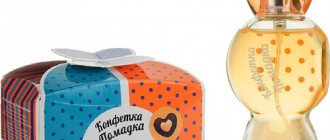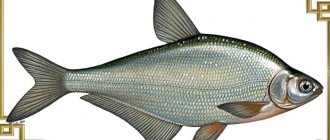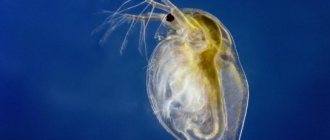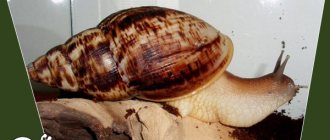Snails (Gastropoda lat.) are the largest group of gastropods. It is also one of the most diverse groups of animals, both in form, feeding habits, and habitat. There are more than 62,000 described living species of snails, and they make up about 80% of living molluscs. Estimates of total extant species range from 40,000 to 100,000, but there may even be as many as 150,000 species! There are approximately 13,000 genus names for both recently formed and fossil gastropods.
Description of the snail, structure, characteristics. What does a snail look like?
Snails or gastropods (Gastropoda) have figured prominently in paleobiological and biological research and have served scientists in numerous evolutionary, biomechanical, ecological, physiological, and behavioral studies.
Photo: PhotoJunket
Snails are characterized by having a single (often rolled) external shell and body, although gastropods with a vestigial shell or those that have lost it completely are called slugs. Since most gastropods have a shell, all representatives of the class are often called snails.
The body of a snail is made up of a head and a leg. It is also covered with a special fold - the mantle. Snails have a well-developed head with two head tentacles and eyes, which are primitively located near the outer bases of the tentacles. In some species, the eyes are located on short or longer eye stalks. The foot is usually quite large and is used for crawling. But it can be modified for snatching, jumping, swimming or clamping.
Beneficial features
Hippocrates also wrote about the benefits of snails for human health. The ancient Greeks noticed that the mucus left by gastropods smoothes scars and is useful for treating skin diseases. Over time, scientists confirmed that Hippocrates was right. The mucus contains substances that act on humans as antioxidants and anti-inflammatory agents. In addition, the secretion secreted by snails is believed by researchers to be the only natural source of copper peptide, a substance that eliminates scars. The gastropod secretory fluid has also been observed to be effective against warts and age spots. In addition, gastropod mucus has been used since ancient times to treat bronchitis, whooping cough and other diseases of the respiratory system.
The meat of these mollusks contains a glycoprotein, and it is believed to have anti-cancer properties. Snail dishes are also considered beneficial for people with cardiac problems.
Top 5 benefits
Snails are an excellent source of lectin, which has anti-cancer properties and stimulates the immune system.- The mucus of these gastropods is rich in allantonin, collagen and elastin - components important for the treatment of skin diseases and bone fractures. Copper peptide from shellfish secretions helps smooth out scars.
- The secretion secreted by these mollusks is an important source of oligosaccharides. In addition, this liquid treats acne, moisturizes the skin, improves its color, and protects against adverse environmental influences.
- Sea snails contain a specific substance that is beneficial for people suffering from depression, Parkinson's disease or drug addiction.
- In the bodies of slugs with “houses”, scientists have discovered a substance that stimulates the production of dopamine (the so-called happiness hormone) in people with neurological disorders.
How many teeth does a snail have? And does she have teeth?
All snails have a special organ in their mouth called the radula. It combines the functions of teeth and tongue and consists of a cartilaginous plate on which cochlear teeth of various shapes are located in several rows.
Photo: Evan Butterfield
Snails that feed on plant foods have small teeth, while in predatory species they are larger, and their shape can be in the form of a hook or a pike. In total, a snail can have up to 25,000 teeth. Some poisonous snail species have teeth that have a cavity inside them. Toxins flow down it from a special gland and paralyze the victim.
Use of poison in medicine
Conotoxin is a type of poison belonging to neurotoxins and has a paralyzing and analgesic effect. These qualities are used in medicine. A compound isolated from the venom of cones, in minimal doses, is a painkiller like morphine, but does not cause addiction. The toxin of poisonous shellfish is an unusual chemical whose action is very promising for obtaining new drugs in medicine.
The unusual coloring of the shells is especially valued by shell collectors.
Currently, substances are being created that contain conotoxin, which alleviates seizures in patients with epilepsy. Another direction of use of poison is in medical cosmetics. One of the constituent substances of conotoxin is used to make anti-wrinkle creams. Its healing properties are based on creating inflammation in certain areas of the face that need correction, which leads to smoothing out small wrinkles on the facial skin.
snail shell
Typically, the snail shell resembles a spiral to which the retractor major muscle is attached. The uppermost part of the shell is formed from the larval shell (prototip). The shell is partially or completely lost in the juveniles or adults of some groups, with complete loss occurring in several groups of land and sea slugs.
Photo: Caleb Coppola
Externally, the snails are bilaterally symmetrical. Thanks to the shell, the internal organs of snails develop asymmetrically. Snail shells are very diverse in size and color; they can be completely smooth or have different growths and roughness. It all depends on the habitat and other vital habits of the snail.
Where do snails live?
Snails are extremely diverse in size, body and shell morphology, and occupy the widest range of ecological niches of any mollusk.
Photo: Denis Bondariev
They live in every possible place on Earth. Snails occupy all marine habitats, from the deepest ocean basins to the supralittoral, as well as freshwater and other inland water bodies, including salt lakes. They are also the only terrestrial molluscs, found in almost all habitats: from high mountains to deserts and rainforests, from the tropics to high latitudes.
What do snails eat?
The feeding habits of snails are extremely varied, although most species use the radula for feeding. They eat plants, carrion, grains, insects, worms and much more. Some types of snails simply graze on green grass, while others hunt for their prey.
Photo: Celeste Mookherjee
Most aquatic gastropods are benthic and primarily epifaunal, but a few are considered planktonic. For example, purple snails (Janthinidae) and sea lizards (Glaucus) drift along the ocean surface where they feed on floating siphonophores, while other species are active plankton-swimming predators.
Nutrition
The name of the snail speaks of its favorite delicacy - grape leaves, although the herbivorous creature feeds on almost any vegetation, even grass and humus. At home, pets should be fed food that is as close as possible to what they consume in the wild. The diet includes
- nettle leaves;
- salad;
- wild strawberries;
- burdock;
- radish;
- lungwort;
- dandelion;
- cabbage;
- horseradish;
- plantain.
Greens should be fresh, juicy, clean. You can add chopped pieces of cucumber and zucchini to your food. At home, the grape snail readily feeds on hemp and flax seeds. Feed includes soybeans, oats, corn, wheat, and buckwheat.
If worrying about what to feed grape snails takes a lot of time, you can purchase compound feed. Diet: 2-3 times a day. Owners of snail farms have calculated that 300 snails per month require 20 kg of feed.
An important feature of snails is the need for calcium salts to grow their shells. A piece of chalk in the house is a prerequisite for a healthy lifestyle for a mollusk.
Cases of consumption of animal food are occasionally observed, but this is not a typical manifestation of the animal's eating habits. A feature of the juveniles emerging from the eggs is that they feed on substances from the soil.
It is important to monitor the cleanliness of the terrarium, in which the remains of wet food can rot. This process is destructive for the inhabitants. The processes of decay create a pathogenic environment that destroys all offspring. Therefore, cleaning up food debris is a necessary element of the snails’ life support.
Snail breeding
Most snails have separate sexes, but some groups (mainly Heterobranchia) are hermaphrodites. Basal gastropods release their gametes into the water column, where they develop. The average number of snail eggs reaches 80-85 pieces. Their ripening lasts up to 21-28 days. Snail eggs can be of different colors - transparent, white, pink, green.
The first larval stage of a snail is usually a trochophore, which develops into a velger and then settles and metamorphoses to form a juvenile snail. While many marine species undergo larval development, there are also numerous marine taxa that undergo direct development, with this mode being the norm in freshwater and terrestrial snail groups. Reproduction of developing embryos is widespread in all snails.
Heterobranchia
Price
You can buy grape snails in a specialized pet store or from private breeders. In the southern regions of Russia, mollusks are found in their natural environment, and it is not difficult to find a suitable specimen.
The risk for the owner is that unsanitary development conditions can cause infection with fungal diseases and mold. The soil substrate is often contaminated with parasites, which, together with the snail, will enter the home environment.
The purchase will be very inexpensive. The price of a grape snail is only 200-400 rubles. For a home nursery, a pair of gastropods is usually purchased. The owner should pay attention to the condition of the mollusk shell.
It should not have visible damage or developmental deformities. The life of a grape snail is interesting to observe. The little pet is unpretentious and attractive with its harmonious existence.
Taxonomy of snails
There is still controversy regarding the phylogenetic position of some genera and groups of snails. Although the taxonomy discussed below is well supported in many modern analyses, some relationships remain somewhat unclear.
Neritopsina
The taxonomic group Neritopsina contains 6 families with marine, freshwater and terrestrial species. Widely varied gastropods, usually small to medium sized, that wrap their shells differently than other snails and do not have a central shell axis. The radula has many teeth in each row.
Vetigastropoda
The major taxonomic group Vetigastropoda is a diverse group that includes the families Fissurellidae, Haliotiidae, Pleurotomariidae and about 10 other families. They are all sea inhabitants that hide in a saucer-shaped shell. The shell is mostly mother-of-pearl and usually has a dome. The radula has many teeth in each row.
Caenogastropoda
Caenogastropoda is a very large, diverse group containing about 100 mostly marine families. Familiar groups include Littorinidae, Cypraeidae, Cerithiidae, Batellariidae and Potamididae, worm snails (Vermetidae), moon snails (Naticidae), apple snails (Ampullariidae), and a large, almost entirely marine group of about 20 families that are all carnivores. The shells of these snails are usually coiled. Members of the caenogastropoda make up about 60% of all living gastropods. Their shells are never mother-of-pearl. Apart from some members, the radula usually has only seven teeth in each row.
Heterobranchia
Heterobranchia is a subclass of gastropods (Gastropoda). The group is distinguished based on the structure of the gills and includes most modern species of gastropods. Early authors placed only marine species in Heterobranchia and considered this taxon as a transitional group between opisthobranchs and pulmonate mollusks. Their shells are never mother-of-pearl.
Patellogastropoda
Visiting almost any rocky environment you can find these wonderful gastropods from the group Patellogastropoda or true limpets. They carefully cling to rocks with their hard shells for protection, and they have many different behaviors related to their habitat and feeding. But true limpets are not limited to the tides, they can be found under the waves, in the deep sea, and there are even some species that live exclusively on driftwood that has sunk to the ocean floor.
They are all marine and many live in the tidal zone. The shell is mother-of-pearl in some taxa, and the porch is absent in adults. Their radula has multiple teeth in each row, some of which are strengthened by the inclusion of metallic ions such as iron.
Danger to humans
Cone toxin is dangerous to humans. Particular care should be taken in contact with the cone snail (70% of cases are fatal), the poisonous cone snail, the marbled cone snail and the textile cone snail. Naturalist Rob Bradl, who studied the nature of Australia, noted that human death occurs within two to five minutes after conotoxin enters the blood. Toxins from other types of cones cause pain and poisoning of the body. Immediately after the bite, a person does not feel pain, but then muscle paralysis occurs. The rapid action of conotoxin contributed to the appearance of the name - “poison of a smoked cigarette”; it is assumed that the dangerous substance acts so quickly that a person has time to smoke only one cigarette. That is why this snail was called the “cigarette snail.”
The speed of spraying a jet of poison reaches 650 km/h
Cone toxin is dangerous to humans
In the Pacific Ocean, 2-3 people die each year from the effects of cone venom, which is much less than from shark bites. Mostly people who suffer are attracted by the colorful shell, and they try to pull the mollusk out of the water, in this case the cone releases poison, the animal simply defends itself from the attack. Large shellfish can penetrate a neoprene glove. In 1993, 16 fatal injuries from cone poisoning were recorded, 12 cases were from geographic cones. The most dangerous are snails that eat fish.
Effect of poison
Conotoxin was studied by the American scientist B. Oliver. Snail venom has a similar effect to cobra venom and causes a blockage of nerve signals going to the muscles.
The entry of a toxin into the blood is determined by the symptoms:
- pale skin
- discoloration of the skin to a bluish color
- followed by numbness
- itching appears around the wound
- acute pain appears, then the burning sensation intensifies
- signs of poisoning spread throughout the body and are especially evident around the mouth
- paralysis occurs
- consciousness turns off
- the insulin contained in the toxin instantly lowers blood sugar levels, causing a hypoglycemic coma
- cardiac arrest occurs.
Scientist B. Halsted suggests that when signs of conotoxin poisoning are identified, respiratory disturbances are usually not typical. Other experts: V.N. Orlova and D.B. Gelashvili consider the extreme situation when people, after contact with the poison of the cone, die not after cardiac arrest, but as a result of paralysis of the respiratory muscles. At the same time, conotoxins in small doses cause drowsiness, relieve cramps, and have the opposite effect - they cause convulsive muscle contractions.
First aid to the victim
Cone catchers, who collect the animals in mesh bags, primarily suffer from poisonous shellfish. They tie a bag filled with prey to their belt and transport it to the shore.
Often, injuries occur to inexperienced collectors who are trying to clean the shell from the soft body of the mollusk.
If handled carelessly, you can be pricked by a sharp thorn. An antidote that can neutralize the effect of the toxic substance has not been identified.
Basic first aid techniques involve the following:
- Careful handling of shells of unknown mollusk species and avoiding direct contact with skin
- the cones should be taken extremely carefully, by the blunt end of the shell, without coming into contact with the soft body of the mollusk
- if the poison gets into the blood, the outcome is not always fatal. Several factors influence: the type of mollusk, the location of the toxin, individual intolerance to the poison
- prompt delivery of the affected patient to a clinic with an intensive care unit increases the chances of survival.
Local residents make a small incision on the victim’s skin at the site where the poison was introduced, and blood slowly flows out of the wound. Specialists only reduce the symptoms of poisoning. It is recommended to apply a tourniquet and a compress of table salt solution above the affected area. For pain relief, novocaine blockade of the soft tissues of the body is performed.
Types of snails: marine, freshwater, land, gill and pulmonate
The most poisonous snail. The geographic cone snail (Conus geographus) is a native of the tropical and subtropical Indo-Pacific regions, found along the northern coasts of Australia. Their surrounding habitat includes live or fragmented coral reefs and sandy areas in tidal zones. They are less common in deeper waters.
The most poisonous snail Conus geographus
The geographic cone snail can kill 15 people with one bite. Symptoms include excruciating pain in the penetrating area, much worse than a bee sting. As the pain subsides, numbness soon sets in, followed by dizziness, slurred speech, and respiratory paralysis. Death may follow within half an hour after this, but such cases are rare. There is currently no known anti-venom; applied pressure to the wound, immobilization and artificial respiration (mouth-to-mouth resuscitation) are the only recommended treatment for the victim.
The smallest snail. The snail Angustopila dominikae is easy to miss, but several tiny shells were found among soil samples found beneath limestone rocks in China. They contained no snails, but the size of the shells indicates that the animals were less than 1 mm long, with the smallest specimen being only 0.86 mm long.
Angustopila dominikae - the smallest snail
The biggest snail. Australia is home to the world's largest snail, the Australian whelk (Syrinx aruanus). The record representative is a snail with a long shell of 91 cm and a weight of 18 kg. On average, the Australian whelk grows up to 70 cm long. They are predatory snails and feed on large live polychaete worms. Due to their popularity, large specimens are now rare, although juveniles often wash ashore after storms and cyclones in northern Australia.
The largest snail Syrinx aruanus
According to their habitat, all snails are divided into land, freshwater and marine, and according to the type of respiration - into pulmonary and gill snails.
Pulmonary snails. About 35,000 species are known, which are usually classified as pulmonate snails. The species characteristic is a functional lung, which was formed from the mantle cavity. To take air into the respiratory organs, they have a breathing hole located at the edge of the snail shell or in the front part of the muscular body. Typical representatives of this group are grape snails (Helix pomatia), coil snails (Planorbidae), Achatina (Achatina) and various slugs.
Helix pomatia
Gill snails. In species that live in the salty waters of seas and oceans, as well as in freshwater bodies of water, gills are located in the mantle cavity.
In addition to the organs that supply the snail’s body with oxygen, the mantle contains the exit ducts of the kidneys, which also includes the reproductive apparatus and excretory system. Among the known species of gill snails are Bithynia, lawn snails (Viviparidae), whelks (Buccinum) and many others. etc. Tags Snails
General information
The number of types of cones is close to 550 - 600. The shells are distinguished by their unusual shell color, size and spotting. There are small mollusks, but some are the size of a person's open palm. The main feature of representatives of the cone genus is the presence of poisonous properties. This is an important adaptation that helps mollusks survive, is used for obtaining food, protection from large predators and attack. The varied morphological forms of the shell attract connoisseurs and are an object of sale.
Appearance
The cone snail is easily distinguished from other mollusks by its shell, which has a geometrically regular conical shell shape. The types of cones are distinguished by beautiful colors. Although the tones are dominated by soft colors, usually gray, milky, black, brown, beige, yellow, white, the design of each sink is individual and has a bizarre pattern. Some snails have shells covered with dots, others have rounded spots, and others have vague streaks.
Types of cones are distinguished by beautiful colors
The shell of gastropod snails is twisted in a spiral, but each turn is laid almost on top of the next turn, so the top of the shell is flattened or almost flat. The aperture is located on the side, has an elongated shape and extends almost the entire length of the shell. A durable shell protects the soft body of the mollusk. Under the mantle there is a siphon to filter water to the gills. A leg with unclear patterns and variable coloring extends through a side opening. It serves for movement and is equipped with a narrow sole. When the muscles contract, the mollusk crawls smoothly and slowly over stones or the surface of aquatic plants. The head, if necessary, protrudes through a small exit at the narrowed end of the shell. The front of the body has several outgrowths. Small eyes sit on two shortened stalks, and between them there is a hunting proboscis in the form of a long tube. This muscular organ serves as the mouth opening and has a radula. In a calm state, a snail’s mouth is difficult to detect, but when hunting very large prey, it extends into a tubular funnel.
Structure of the snail
Cone snails have a soft, non-segmented body enclosed in a shell and are distinguished by structural features:
- The shell sizes range from 6-20 cm, but larger specimens are found.
- The shell is massive, conical in shape, widened on the last turns.
- the cover is formed by an organic horn-like substance, and the inner layer is composed of the thinnest plates of lime.
- the apex is pointed, the curl resembles a cap in shape.
- the entrance to the shell is slit-like and narrow.
- The color varies from white to yellowish, milky shades.
- spotting is expressed to varying degrees and has a dark color.
- dark spots are arranged in parallel rows.
Where does the cone snail live?
The cone snail lives in tropical waters and is found in seas with moderately warm water - in the Mediterranean Sea. It prefers shallow waters of coral reefs. Most species inhabit the Indian, Pacific, Japanese, Caribbean and Red Seas. Some species have adapted to live at higher latitudes.

